#Gravettian culture
Explore tagged Tumblr posts
Text
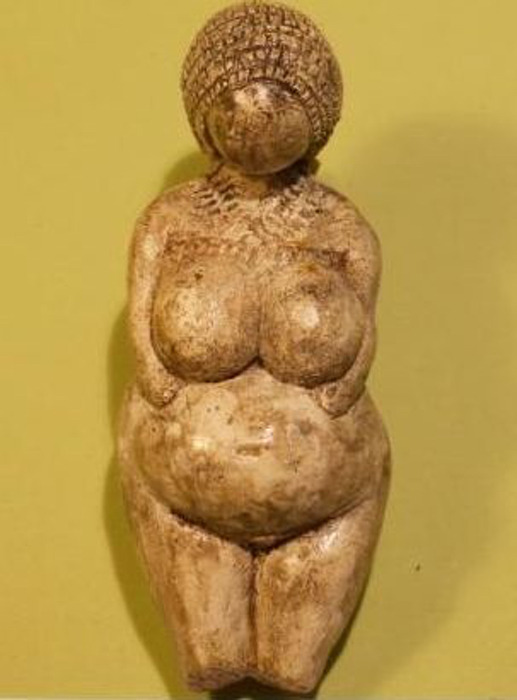
"The so-called "Venus of Kostenki" was recovered from one of the Paleolithic sites on the Don River in Russia. Several figurines from this area share the same traits and indicate a single goddess who is encountered not just in Russia but throughout prehistoric Europe and the Near East. Her commonalities in so many figurines include the largeness of breasts, belly, thighs, and buttocks; a globe of a head with closely plated hair or more likely a knitted cap; and arms folded under breasts. Of subtler recurrence, least often remarked upon but of signal importance, is how often her head is tipped downward, not skyward, for the afterlife is not in the sky but in her own womb, the womb of the fatted earth. She is additionally faceless, as the Goddess in her wholeness is unknowable. This is the standard appearance of the Kostenki goddess figurines; but how nearly identical she is to prehistoric figurines from France to Israel is what startles. It is now known that a series of prehistoric societies were extremely far-ranging in their influences, amounting to a vast society of roaming hunter-gatherers. The last of these cultures has been named the Gravettian, the mammoth hunters who built sturdy shelters of mammoth bones to stand against even Ice Age storms, or dwelt in caves or semi-underground habitations. They were not a settled culture but did have centers revisited seasonally or periodically, ritual sites or encampments along the trails of migratory animals. Gravettian art dates from 25,000 to 20,000 BCE or older in Europe (and the Kostenki sites in use from about 37,000 BCE). This surprisingly was a unified culture that lasted a minimum of 5,000 years, with lingering elements until 17,500 BCE, and influences on the following Epigravettian era in Spain, Italy, France, the Balkans and Ukraine. Their goddess figurines were small because a nomadic existence required portability. When the Ice Age ended, Gravettian culture begins its slow fade into settled agricultural societies, the first cities, the earliest of which still created heavy-set faceless goddess figurines."
~ Jessica Amanda Salmonson
#Venus of Kostenki#Jessica Amanda Salmonson#sacred ways#ancient ways#Goddess#Paleolithic#Don River#Russia#Europe#goddess figurines#Gravettian Culture#25#25000 to 20000 BCE#37000 BCE#Epigravettian#Spain#Italy#France#the Balkans#Ukraine
20 notes
·
View notes
Text
This post is getting attention today, so I thought I would recommend this epic 2 hour video on the Gravettian culture, which is the specific culture that did these burials. It is from North 02, who does some great stone age videos. He also has videos on other European paleolithic cultures, from before and after the Gravettian, like the Aurignacian, Magdalenian, and Solutrian cultures. Definitely worth a watch (or putting on in the background when you do other stuff) if you are into early humanity.
youtube
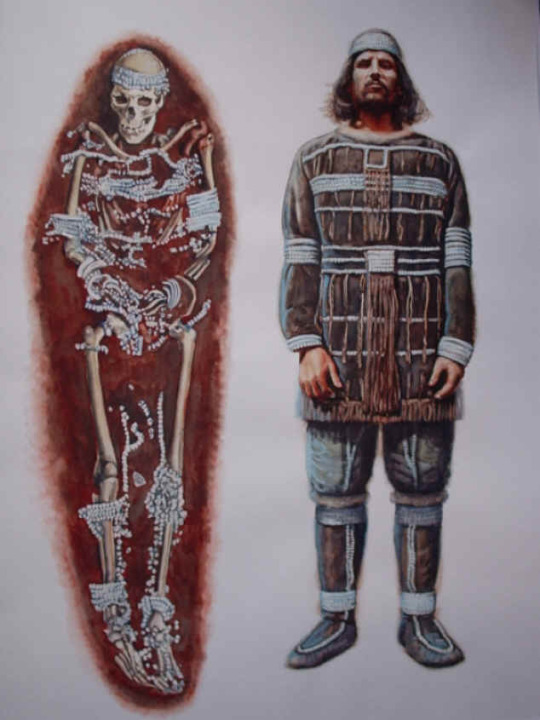
Disability in the Ice Age
People usually talk about the dawn of civilization in occuring around the Neolithic, like 12000 years to 6000 years before present, but people have been experimenting with different ways of organising society well back into the late pleistocene, or ice age (30,000 to 12,000 years BP). In ice age Europe and Russia, people would build villages out of mammoth bone and skin, which they would inhabit for a season then break up into hunter gather bands for another season.
A particularly interesting part of ice age culture is their burials. They normally didn't bury their dead, but they did sometimes. The burials are marked as being very rich, with lots of grave goods, including weapons, tools, or intricately carved beads on their clothes. (Pictured: A burial called the Gravetian Prince). Interestingly, most of the burials from this time period have disabilities evident in their skeletons. This has led to the theory that in ice age culture, disabled people may have held a shamanic or ritual significance (as they do in some contemporary hunter gather societies). Non physically disabled ice age burials could have had some disability that is not evident in the skeleton, such as autism or epilepsy. This really goes against the stereotype that disabled people in prehistory would not have been cared for and died young.
Sources: The Dawn of Everything, by David Graeber and David Wengrow. Gobekli Tepe Ancient History Documentry, by History Time.
2K notes
·
View notes
Text
Gravettians
0 notes
Text
The most recent culture of the Upper Palaeolithic (the Late Upper Palaeolithic) in western and Central Europe is the Magdalenian, 20,000 - 12,500 years ago.

A man of the Moravian Magdalenian. He holds a spear-thrower using the principle of leverage, and a spear with a bone projectil point with saw-like razor-sharp microlites. The horses on his clothing are depicted according to a decorated object found in the Pekárna Cave (the Moravian Karst).

In front of the tent in the Pekárna in Moravian Karst cave. The large cave didn´t espace notice of the Magdalenian hunters, which were tracking the cariboos herds around the karst areas. In the cave of Pekárna, the rank of fireplaces was discovered across the corridor, which was probably the standing place of the tents. The cave climate was convenient for fabrication of the cariboo meat. The karst area enabled the hunters to use the terrain for building perfect traps.

Fascinating artefacts found in the Pekárna cave: tiny bone needles, Silicit tools, embedded into boned or horn handgrip, harpoons, blade-liked, decorated artefacts and fascinating portrayals of the scenes of the wildlife on the horse ribs (grazing horses, fighting bisons).

A camp of reindeer hunters of Petersfels
The picture takes us to southwest Germany, the well-known site of Petersfels by Engen. The narrow valley became a trap for hunted reindeer. Reindeer were killed there on a large scale, as the remains of their bones witness. The peculiarity of this picture is that the photographic studies were not created artificially, but were made just on the site, where well-versed fans displayed their home-made clothes, tents and Magdalenian weapons
Notice the antler heads of the throwing weapons, which were made so well that they can be compared with the artistic level of carving in butts of the recent firearms.

One of the most beautiful and imaginative engravings on the thrower represents two fighting Capricorns. The Trois Frères cave in France. The image reconstruction represents the artefact in it´s original form (the heads of the Capricorns are not preserved).

A Magdalenian bone points with microlites A bone point from the Drátenická Cave in the Moravian karst. This artefact is now in the Institute Anthropos, which is a part of the Moravian Museum (Moravské zemské muzeum) in Brno. You can see (the lower part to the right) an impression of the former careful and fine binding. The reconstruction depicts the procedure of its piecing together.

The convenient terrain helps during the hunting. The Northern societies often hadn´t have enough members for driving the gregarious animals. Therefore, they built stone pillars, which the hunted cariboos were not able to distinguish from the hunter.

The bone needles found in abundance both in Petersfels and the Moravian Karst are different from those of the Gravettian. The woman in the picture is sewing a piece of clothing using an awl and a needle. The man is repairing the bone point of a weapon. He easily replaces individual broken segments of the cutting edge with new ones. To the left from him, there is his equipment, such as throwing weapons, lamps, a chieftain’s baton, a flute and bone points.

The reconstructional imitations of clothes dating back to the era of the Magdalenian reindeer and horse hunters. The first clothing is exhibited in the Museum of Engen. You can see decorative patterns made according to an ornamented shovel-like object found in the Moravian Karst on the right clothing.

A spear-thrower was ideal for hunting animals living in herds, such as horses and reindeer. It was capable of shooting a maximum amount of projectiles within a minimal period of time. The accuracy of shots at a mass of running bodies was unimportant, the work was completed by sharp points. Most likely massive stone pillars were used when driving reindeer. Reindeer avoided them in the same way as they avoided people. That is why the Magdalenians preferred such environment where limestone screes, of which they erected the pillars, were available, e.g. outcrops of limestone, which are characteristic of the karst areas. The whole life of these people was closely connected with animals living in herds, and it formed their culture. The Magdalenian settlements came to Central Europe, namely to Poland, 16,000 years ago and to Moravia about 13,000 years ago

The representation of women, the unmistakable Magdalenian Venuses, was quite curious. Women’s figurines hardly bore any detail, they were often just outlined, and their bottoms were always stuck out. Some small figurines had holes for hanging.
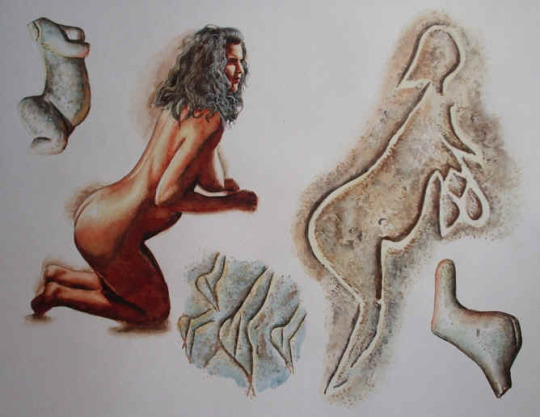
One of the few Magdalenian Venuses that provided at least some information about her hairdo.
#Libor Balák#archaeology#prehistory#stone age#paleolithic#art#historical reconstruction#venus figurine#magdalenian culture#hunter gatherer#ice age#brno mention!!!!#my upl#european prehistory
49 notes
·
View notes
Note
Trick or treat! I’d love to hear about this asexual caveman project you speak of 👀
thank you!
So admittedly I am being kind of facetious calling them cavemen. The setting is 30,000 years ago in Eastern Europe or Western Asia. Gravettian culture era. And my group mostly doesn’t live in caves (Ice Age people didn’t often live in caves, at best they usually lived in shallow rockshelters, though many also resided in seasonal tents and huts.)
Atm I have my Paleolithic human group spending the winter in anachronistic but badass mammoth bone huts.
Shelters… made of mammoth bones! This was a real thing Ice Age people did!
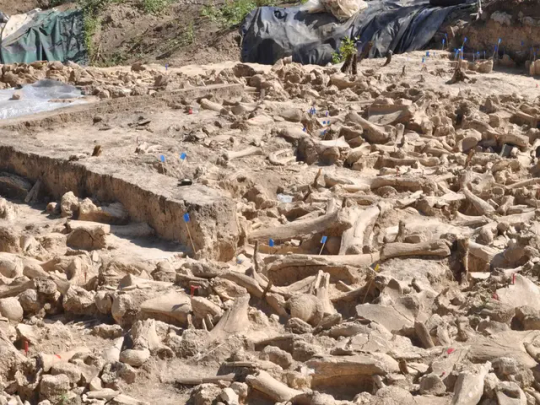
Image: an archaeological site strewn with the bones of at least 60 mammoths, which were used as the structural supports for tents or huts around 25,000 years ago. Western-ish Russia.

Image: hypothesized reconstruction of a mammoth bone hut from the site of Mezhyrich or Mezhirich, Ukraine, 15,000 years old. This shows exposed bone but it would likely have been covered in hides when it was in use.
My Ice Age protags live in mammoth bone huts in the winter because I think they’re rad. Honestly, one of my difficulties has been trying to decide on a time period setting, because I want Neanderthals (traditionally identified as going extinct 40,000 years ago, but some arguments for pockets of Neanderthals that survived up to 30,000 years ago, which I’m jumping on) but I also want mammoth bone huts (oldest known 25,000 years old, but more of them closer to 15,000 years old.) Mixing the last vestiges of surviving pockets of Neanderthals knowing they’re going extinct without really having a framework for that, and Gravettian Homo sapiens making mammoth bone huts a few thousand years early because they’re trendsetters like that. However, they’re also highly mobile, not living full-time in any location.
They do have a sacred cave for religious activities and initiations. That becomes important later. The sacred cave can also trans your gender if u want it to.
23 notes
·
View notes
Text
We're impressed by the ancient Egyptian and Chinese cultures, where you see continuity over like 4,000 years. And yes, that's impressive.
But then you have the Gravettian Culture, which lasted from like 34,000 to 24,000 years ago, which covered all of Europe and included genetically-unrelated people, and they were all using the same tools, living in the same houses built from mammoth bones, and carving intricate statues of sexy fat girls, for around 10,000 years.

This is so long before any concept of writing that we have no idea what they were up to, or why. So when they did stuff like this,

we have no idea what the hell that was about.
That's three brothers or cousins buried together in the edge of a hill under a structure of branches. One guy is face-down, the one in the middle has a rare genetic disorder, and the other guy has his hand over that guy's dick. They were all around 20 years old.
No doubt these people had lives and a religion that is exactly as complex as any now, and they did this for 10,000 years, and we have NO IDEA what they were about.
But they were us, obviously. And they loved the booty.
We've been around, as we are now, for like 300,000 years. We've had writing for like 6,000 years? Never forget, there are empires of love and life and dreams and philosophy that have come and gone, before we had any way of recording an explanation.
Just big girls, and some guy grabbing his disabled cousin's dick.
21 notes
·
View notes
Text
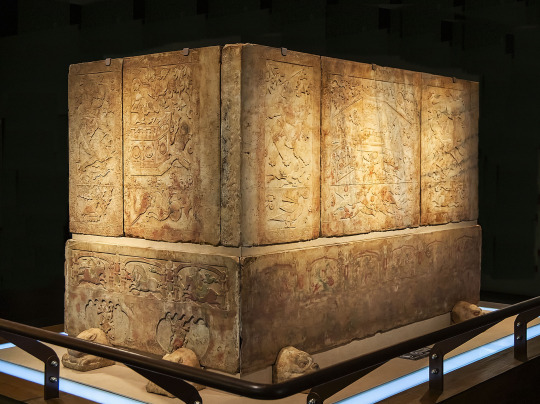
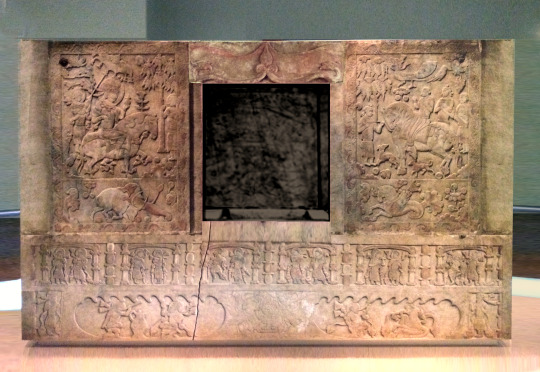
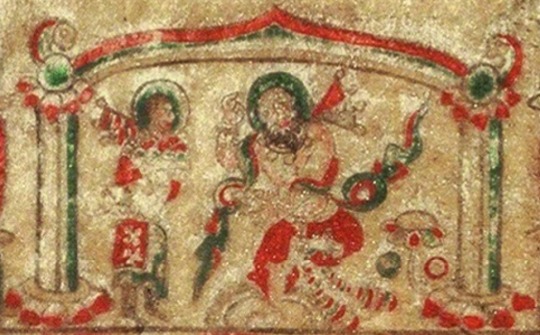
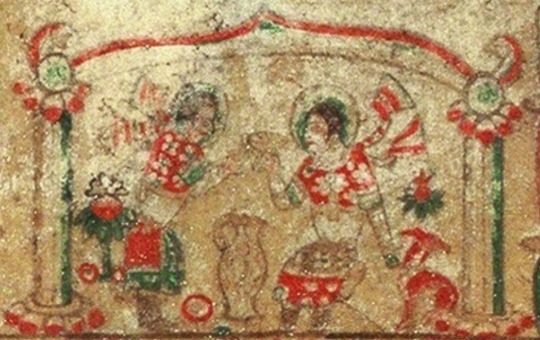
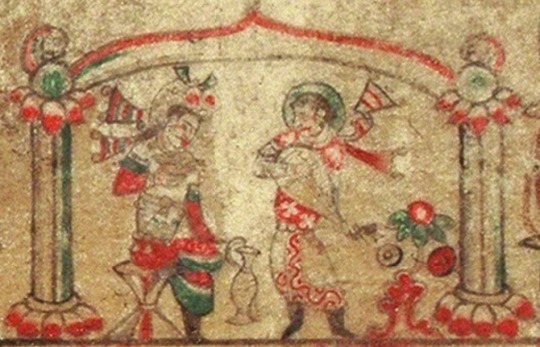
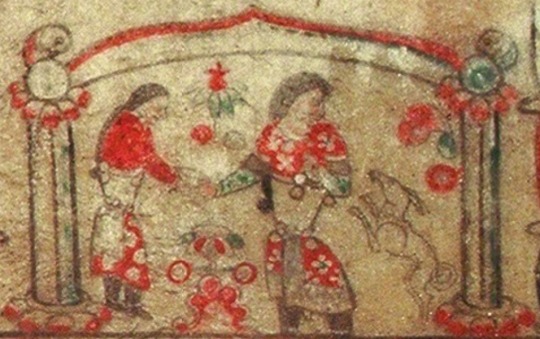


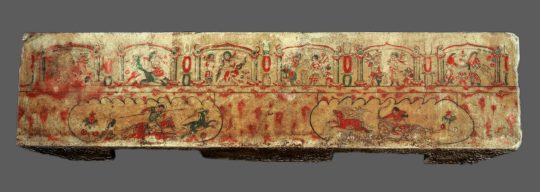
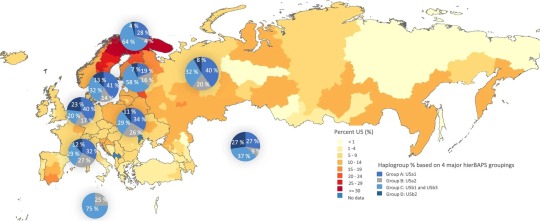
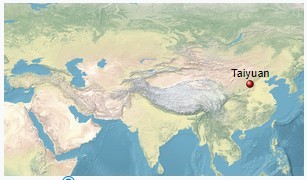
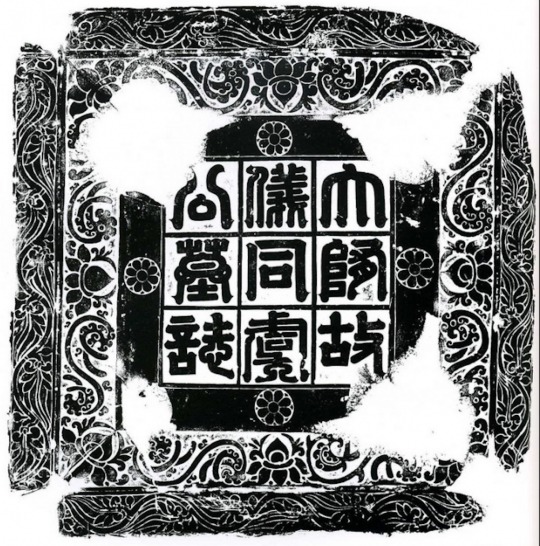
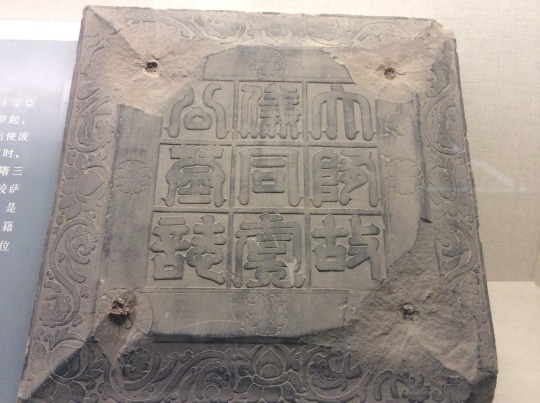

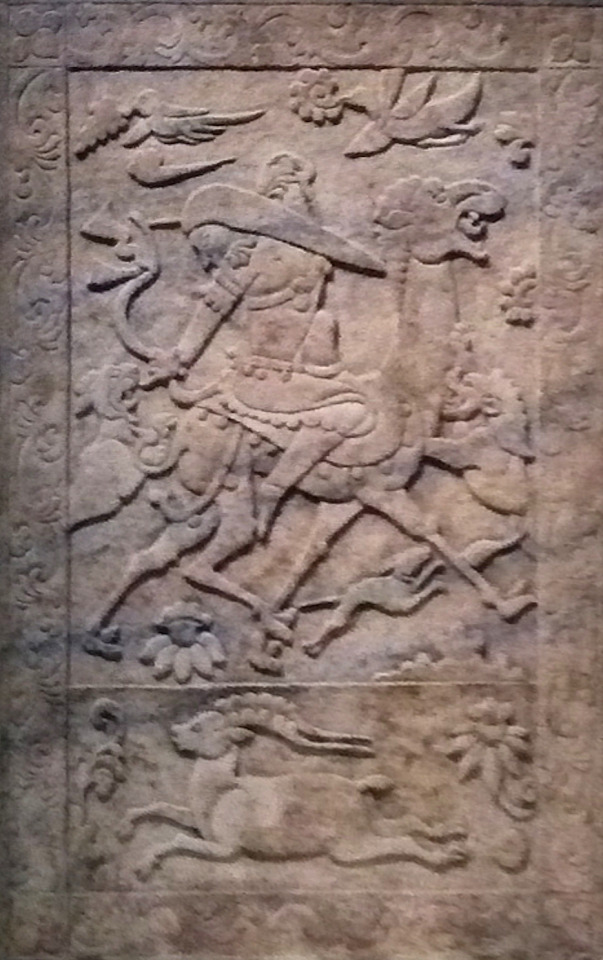
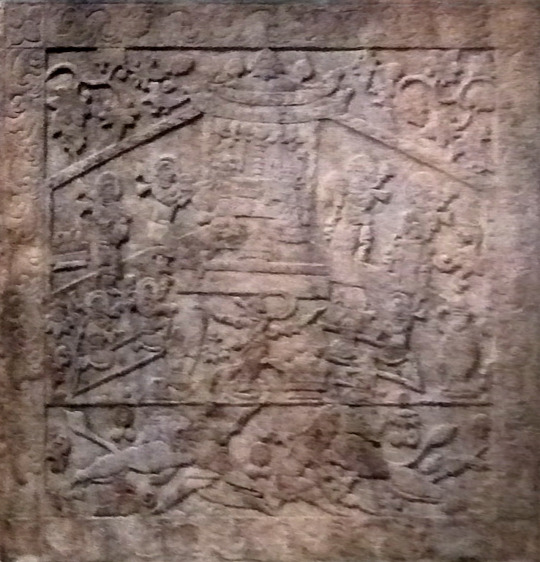
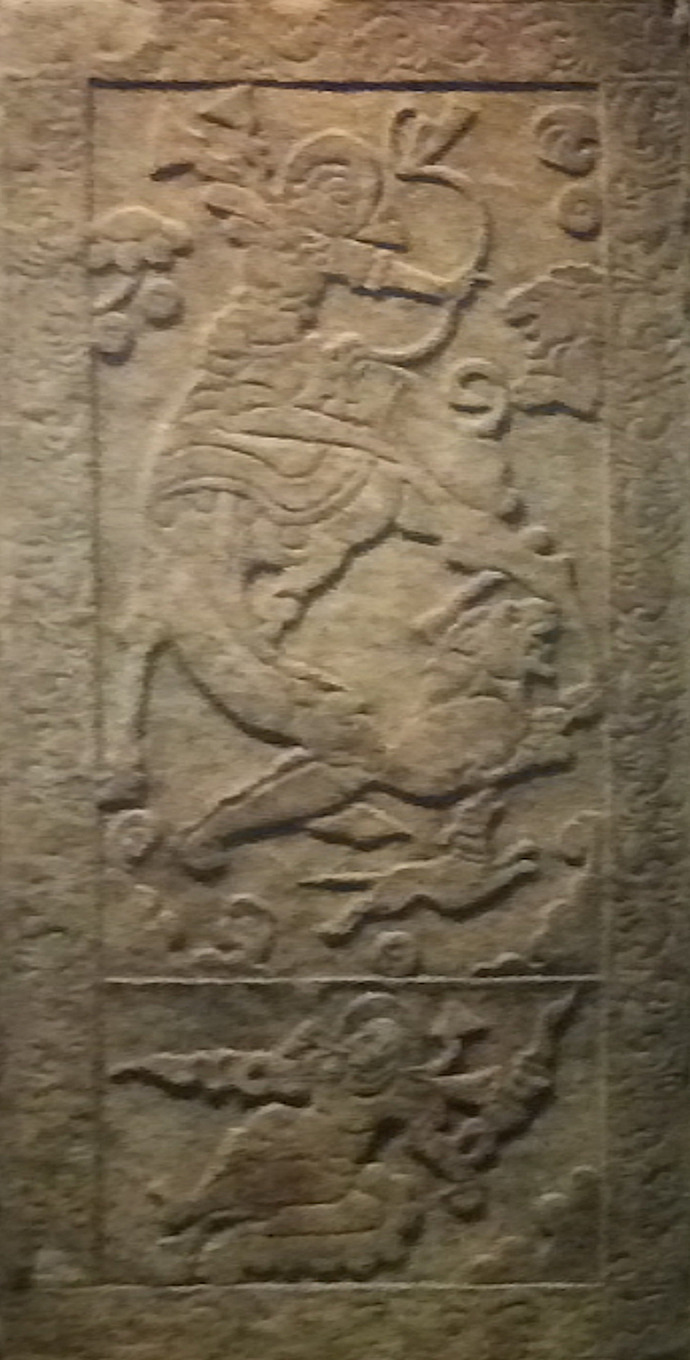
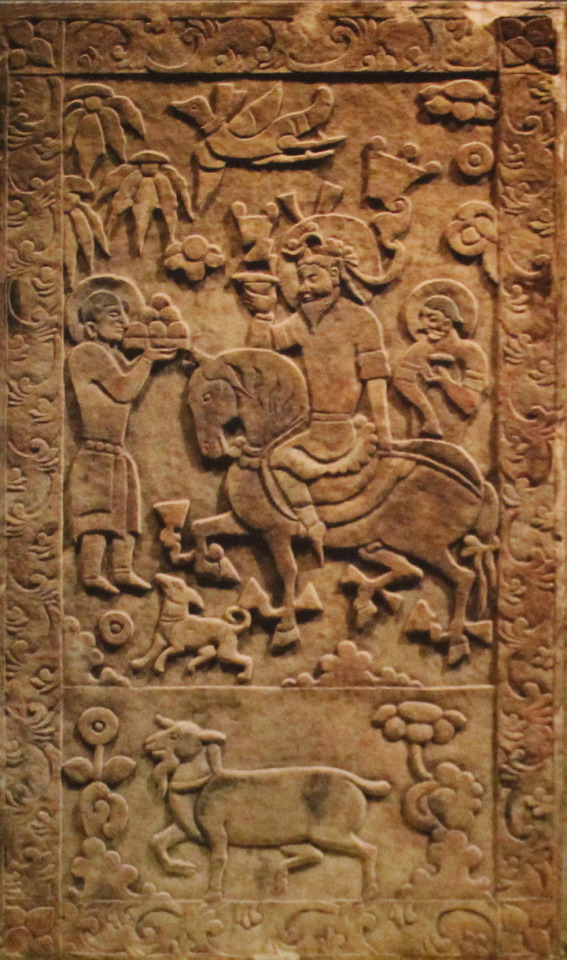
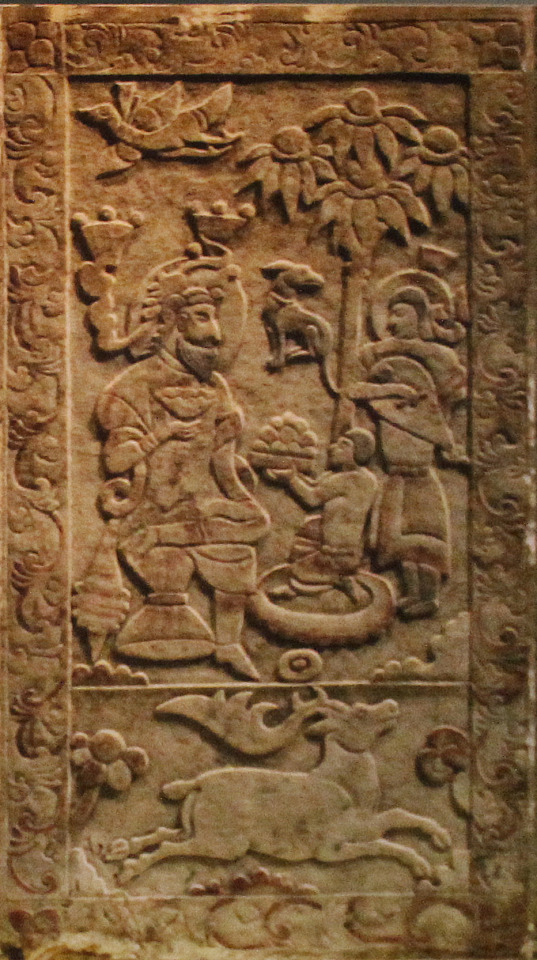
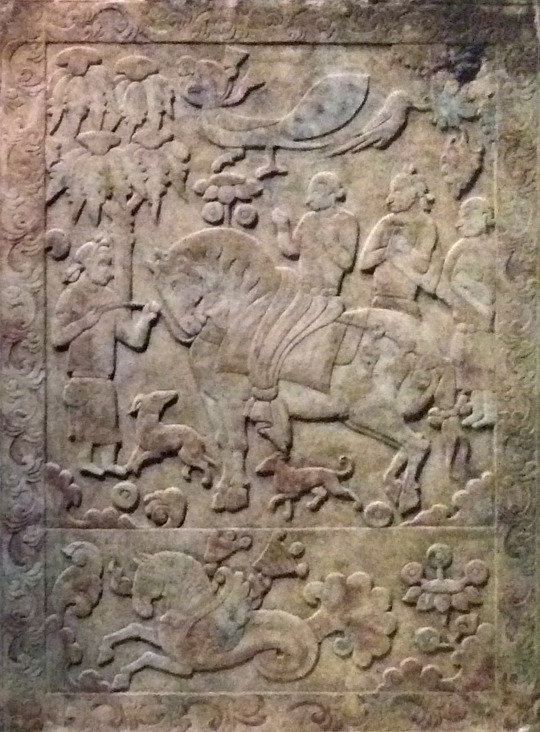
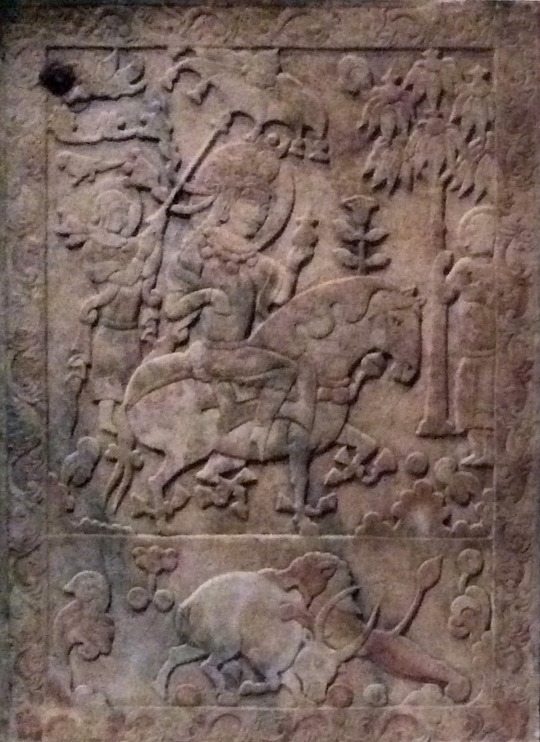
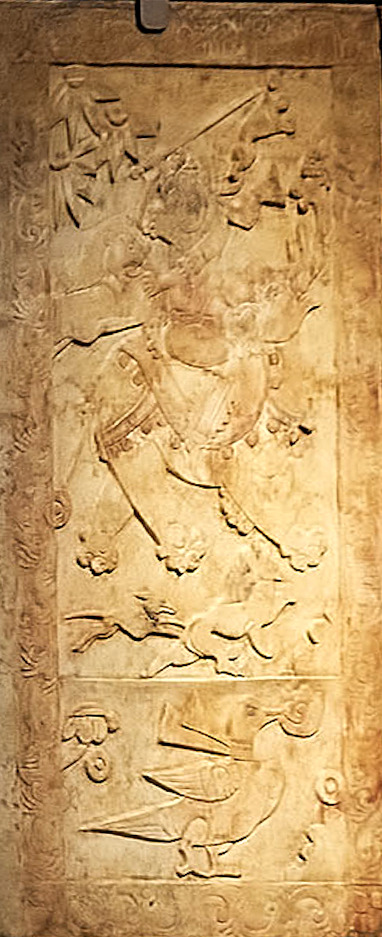
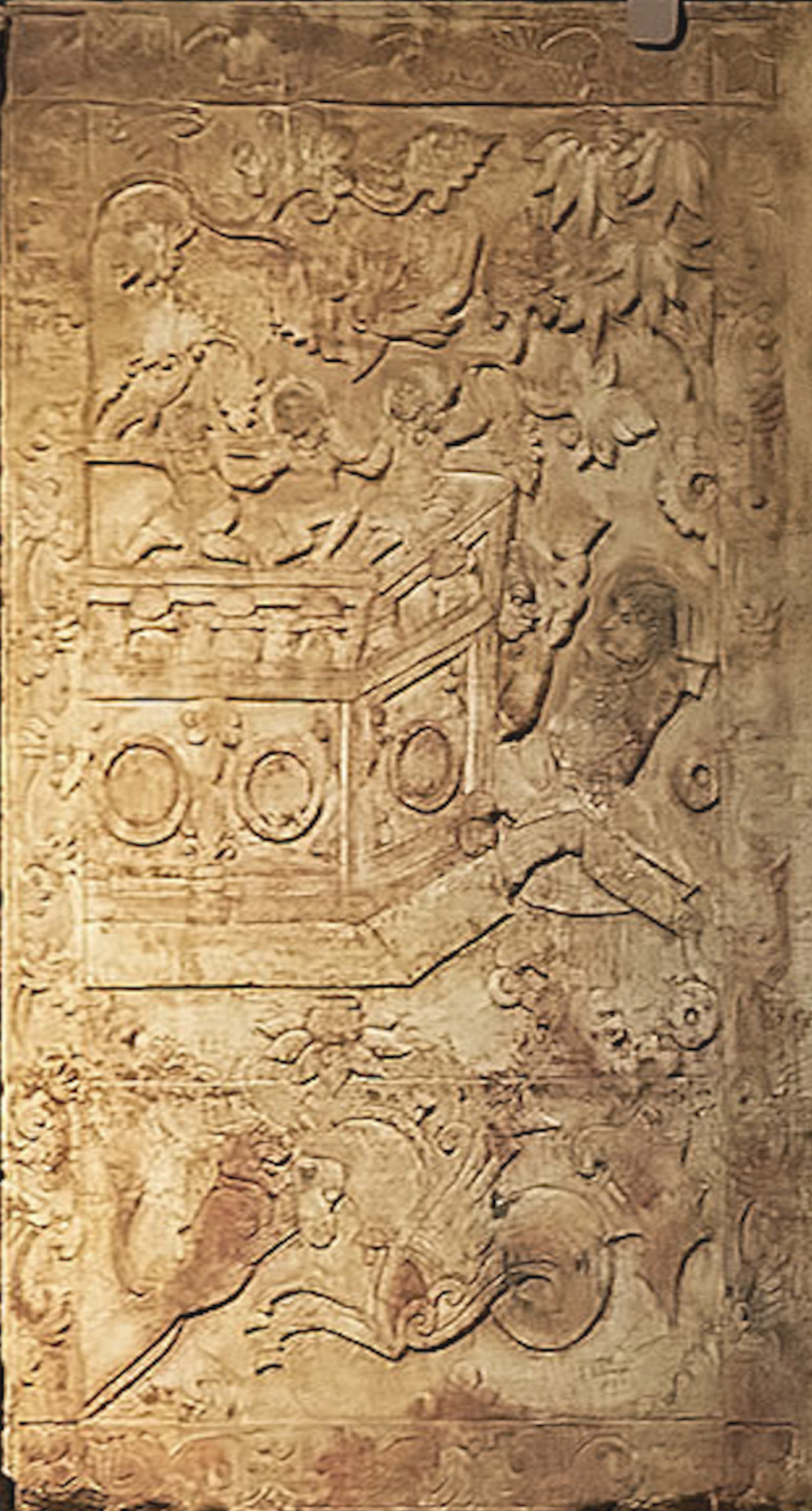



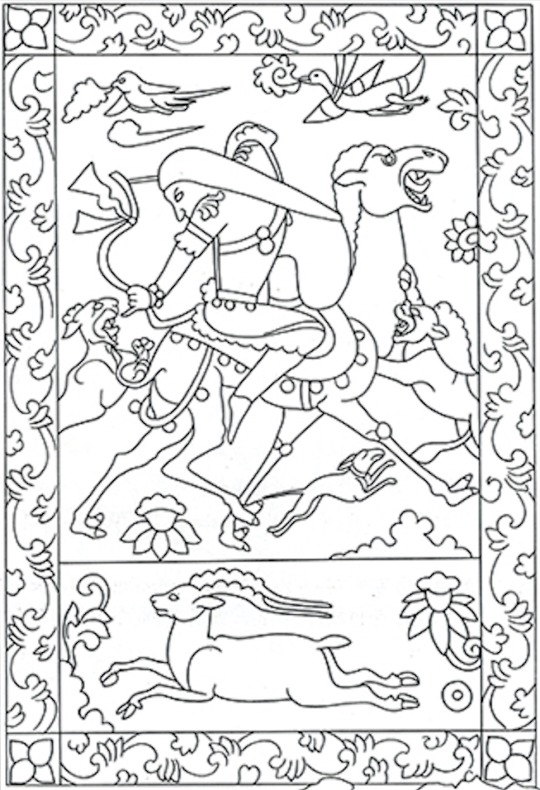


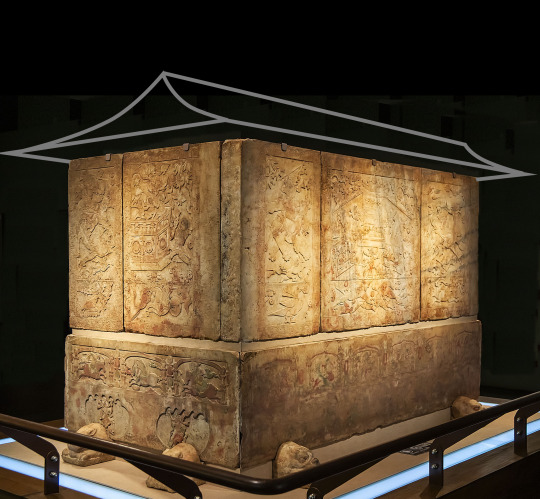
Tomb of Yu Hong 592-598 CE. Link to my blog at bottom with more sources and description of individual images.
This is probably a Sogdian tomb. Interestingly, the man has a haplogroup that was widespread amongst the blue-eyed Mesolithic/Neolithic Western Hunter Gatherers (WHG are probably where blue eyes originated from) and the haplogroup is found today most prominently in Sami, Finns, and Estonians. His wife has a haplogroup found prominently amongst East Asians. Based on her East Asian origins and the inclusion of some Turkic-looking people in the tomb's artwork I would assume she was probably a Turk, herself. The long-haired men without halos (e.g. panel 4) are probably Turks, that was a typical appearance for them during this time period. Men from other surrounding populations such as the Sogdians, Huns, Tocharians, etc. typically kept shorter hair that didn't go past their shoulders. More info:
"The man buried in the tomb went by Yu Hong (Chinese: 虞弘; pinyin: Yú Hóng; Wade–Giles: Yü Hung; 533–592 AD), with Mopan (莫潘) as his courtesy name, who was a Central Asian, probably of Persian or Sogdian origin, and practiced Zoroastrianism. He had settled in Early Middle Period China during the Northern Qi, Northern Zhou and Sui dynasties. This tomb is so far the only archaeological find in the Central Plains region that reflects Central Asian (Western Regions) culture. The epitaph found in the tomb records that he was a noble of the city of Yü-ho-lin / Yuhelin (尉紇驎) in the mysterious Yu country (魚國), assumably for which he is named, because the two characters 虞 and 魚 are homophones.
According to the epitaph, Yu Hong started his career in service of the nomadic tribe at the time, known as Ruru. At the age of 13, he was posted as an emissary to Persia by the Khagan of Ruru, as well as Parthia, Tuyuhun and Yuezhi. Later he went on a mission to the Northern Qi, Northern Zhou and Sui dynasties. He served as chien-chiao sa-pao fu / jianjiao sabao fu (檢校薩保府, lit. “acting director of the office of Zoroastrian affairs”, or “Sogdian affairs”) during the Northern Zhou period. The term sa-pao / sabao (薩保) comes from the Sogdian s′rtp′w, means a “caravan leader”.
He had later served as a provincial governor in the Sui dynasty government, a chieftain of the Central Asian people who had settled in China during that period. Yu Hong died at the age of 59 in 592 AD. His wife survived him by six years, and was buried in the same grave in 598 AD.
A study on ancient DNA reveals that Yu Hong belonged to the haplogroup U5, one of the oldest western Eurasian-specific haplogroups, while his wife can be classified as haplogroup G, the type prevalent in East Asia.
The age of U5 is estimated at between 25,000 and 35,000 years old, roughly corresponding to the Gravettian culture. Approximately 11% of Europeans (10% of European-Americans) have some variant of haplogroup U5.
U5 was the predominant mtDNA of mesolithic Western Hunter Gatherers (WHG) [this is where blue eyes probably originated from].
U5 has been found in human remains dating from the Mesolithic in England, Germany, Lithuania, Poland, Portugal, Russia, Sweden, France and Spain. Neolithic skeletons (~7,000 years old) that were excavated from the Avellaner cave in Catalonia, northeastern Spain included a specimen carrying haplogroup U5.
Haplogroup U5 and its subclades U5a and U5b today form the highest population concentrations in the far north, among Sami, Finns, and Estonians. However, it is spread widely at lower levels throughout Europe. This distribution, and the age of the haplogroup, indicate individuals belonging to this clade were part of the initial expansion tracking the retreat of ice sheets from Europe around 10,000 years ago.
U5 was the main haplogroup of mesolithic European hunter gatherers. U haplogroups were present at 83% in European hunter gatherers before influx of Middle Eastern farmer and steppe Indo-European ancestry decreased its frequency to less than 21%.
Today, haplogroup G is found at its highest frequency in indigenous populations of the lands surrounding the Sea of Okhotsk. It is an East Asian haplogroup. Haplogroup G is one of the most common mtDNA haplogroups among modern Ainu, Siberian, Mongol, Tibetan and Central and North Asian Turkic peoples people (as well as among people of the prehistoric Jōmon culture in Hokkaidō). It is also found at a lower frequency among many other populations of East Asia, Central Asia, Bangladesh, Sri Lanka, and Nepal. However, unlike other mitochondrial DNA haplogroups typical of populations of northeastern Asia, such as haplogroup A, haplogroup C, and haplogroup D, haplogroup G has not been found among indigenous peoples of the Americas."
-taken from Wikipedia
#sogdiana#indo european#ancient china#ancient history#antiquities#history#art#museums#sculpture#statue#ancient#turkic#eurasian#finnish#estonian#finno ugric#genetics
142 notes
·
View notes
Text
Splatoon: The Vestigial Species - Design Ideas (Europe)
If you have not viewed the main post first, please do so. Otherwise, here is a list of archaeological cultures which you are free to choose from to use as an inspiration when designing your human society!
Paleolithic/Mesolithic
Bohunician Culture
Aurignacian Culture
Gravettian Culture
Epigravettian Culture
Solutrean Culture
Magdalenian Culture
Azilian Culture
Maglemosian Culture
Kongemose Culture
Ertebølle Culture
Dnieper-Donets Culture
Pitted Ware Culture
Neolithic
Sesklo Culture
Neolithic Greece
Starčevo–Körös–Criș Culture
Vinča Culture
Karanovo Culture
Gumelniţa Culture
Linear Pottery Culture
Stroke-Ornamented Ware Culture
Rössen Culture
Lengyel Culture
Cardium Pottery Culture
Cucuteni-Trypillia Culture
Michelsberg Culture
Funnelbeaker Culture
Tisza Culture
Globular Amphora Culture
Ozieri Culture
Baden Culture
Bronze Age
-Pastoral
Samara Culture
Khvalynsk Culture
Repin Culture
Yamnaya Culture
Catacomb Culture
Vučedol Culture
Poltavka Culture
Fatyanovo Culture
Abashevo Culture
Sintashta Culture
Srubnaya Culture
-Sedentary
Corded Ware Culture
Bell Beaker Culture
Únětice Culture
Tumulus Culture
Nordic Bronze Age
Terramare Culture
Apennine Culture
Wessex Culture
Atlantic Bronze Age
Hallstatt Culture
Urnfield Culture
Helladic Culture
Cycladic Culture
-Civilizations
Minoan Civilization
Mycenaean Civilization
#splatoon#splatoon 2#splatoon 3#splatoon 4#splatoon headcanon#splatoon fandom#splatoon art#splatoon fanart#fan concept#art contest#collaborative projects#art collab
5 notes
·
View notes
Text
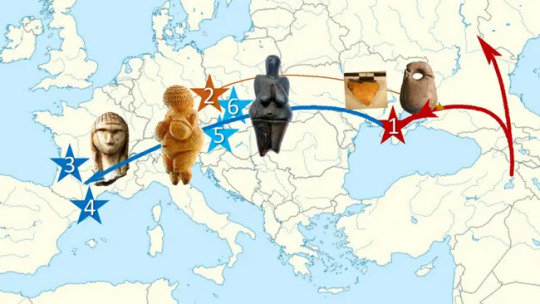
The first modern humans to take up permanent residence in Europe settled in Crimea around 37,000 years ago, according to an analysis of their DNA. Within 7,000 years, their descendants gave rise to a culture that included Venus figurines, stone tools and jewelry.
Although anthropologists have long known that some human groups began leaving Africa around 60,000 years ago, most of them were nomadic, not staying long in any particular area. And around 40,000 years ago, a supervolcano in southern Italy wiped out most of the humans and Neanderthals in Europe. These events have led anthropologists to wonder when the ancestors of today's Europeans arrived and decided to settle down.
An international team of researchers now believes they have found Europe's first permanent residents among a collection of skeletons from the site of Buran-Kaya III on the Crimean Peninsula. They published their findings Oct. 23 in the journal Nature Ecology and Evolution.
Buran-Kaya III, a cave site originally discovered in 1990, boasts rich deposits of human activity dating from the Middle Paleolithic to the Middle Ages — a span of at least 50,000 years. But archaeologists are most interested in layers dating from 38,000 to 34,000 years ago, as they include objects such as stone tools and carved bones similar to artifacts from the Gravettian culture. This culture spread across Europe starting about 33,000 years ago, which suggests that Buran-Kaya may be the earliest evidence of permanent settlements in Europe and may have given rise to the Gravettian culture.
To investigate the idea that the Buran-Kaya people were the ancestors of the Gravettian toolmakers, the research team, led by paleogenomics experts Eva-Maria Geigl and Thierry Grange of France's National Center for Scientific Research (CNRS), sequenced the genomes of two male skeletons found at Buran-Kaya that were carbon-dated to about 35,800 to 37,500 years ago.
#crimea#anthropology#since crimea is ukraine the first permanent residences in Europe were Ukrainian /joking#'i have connected the dots' 'you didn't connect shit' 'i have connected them'
41 notes
·
View notes
Text

Epigravettian Culture: this culture led the way into the European Mesolithic in its core territory in the Carpathian basin, emerging around three and-a-half millennia after the recognised end of the Gravettian.
#history#historyfiles#archaeology#ancient world#epigravettian#mesolithic#prehistory#european mesolithic#carpathians#gravettian#europe#ancient history#ancient europe
3 notes
·
View notes
Text

"The so-called "Venus of Kostenki" was recovered from one of the Paleolithic sites on the Don River in Russia. Several figurines from this area share the same traits and indicate a single goddess who is encountered not just in Russia but throughout prehistoric Europe and the Near East.
Her commonalities in so many figurines include the largeness of breasts, belly, thighs, and buttocks; a globe of a head with closely plated hair or more likely a knitted cap; and arms folded under breasts.
Of subtler recurrence, least often remarked upon but of signal importance, is how often her head is tipped downward, not skyward, for the afterlife is not in the sky but in her own womb, the womb of the fatted earth. She is additionally faceless, as the Goddess in her wholeness is unknowable.
This is the standard appearance of the Kostenki goddess figurines; but how nearly identical she is to prehistoric figurines from France to Israel is what startles. It is now known that a series of prehistoric societies were extremely far-ranging in their influences, amounting to a vast society of roaming hunter-gatherers.
The last of these cultures has been named the Gravettian, the mammoth hunters who built sturdy shelters of mammoth bones to stand against even Ice Age storms, or dwelt in caves or semi-underground habitations. They were not a settled culture but did have centers revisited seasonally or periodically, ritual sites or encampments along the trails of migratory animals.
Gravettian art dates from 25,000 to 20,000 BCE or older in Europe (and the Kostenki sites in use from about 37,000 BCE). This surprisingly was a unified culture that lasted a minimum of 5,000 years, with lingering elements until 17,500 BCE, and influences on the following Epigravettian era in Spain, Italy, France, the Balkans and Ukraine.
Their goddess figurines were small because a nomadic existence required portability. When the Ice Age ended, Gravettian culture begins its slow fade into settled agricultural societies, the first cities, the earliest of which still created heavy-set faceless goddess figurines."
~ Jessica Amanda Salmonson
#Venus of Kostenki#figurine#ancient ways#sacred ways#goddess#goddess figurines#Gravettian culture#Jessica Amanda Salmonson#Paleolithic#Don River#Russia#Kostenki goddess figurines#37000 BCE#Epigravettian era#Spain#Italy#France#The Balkans#Europe#Prehistoric
8 notes
·
View notes
Text
Also: one fun thing about having little actual formal linguistics education (ok about 3 hours short of a TESOL minor but most of it was sociolinguistics and not applied linguistics aka the class I was missing) and being into conlanging is that on the one hand I can know what I want a functions to be. On the other hand I don’t know the proper way to explain said function.
Aka the genitive case confuses me so I have a possessive case which may or not be an actual grammatical case according to Wikipedia (as well as an objective case and a lative case for similar reasons)
I’m currently tinkering with a proto-lang of a people that are roughly equivalent to like the Upper Paleolithic cultures (Aurignacian or Gravettian) of Europe so it’s like one of this setting’s very first languages so it can be a bit wonky
#conlanging#conlang#look English doesn’t have case marking on nouns except for the vestigial ‘s of possession I’m not used to this in practice#even Biblical Hebrew really just has et as a direct object marker and that’s it#I’m doing my best
2 notes
·
View notes
Text
Prehistory & Prehistoric Art and Ancient Near East
The era of cave painting marks the birth of style. It is nearly impossible to talk about the birth of style without mentioning the “Venus of Wellendorf.” She dates from about 24,000 B.C.E., standing at a mere 4.4 Inches in height. This sculpture is predominantly focused on fertility, but she is of interest to many fashion historians because of her head. Take a look at her head; what is going on there?
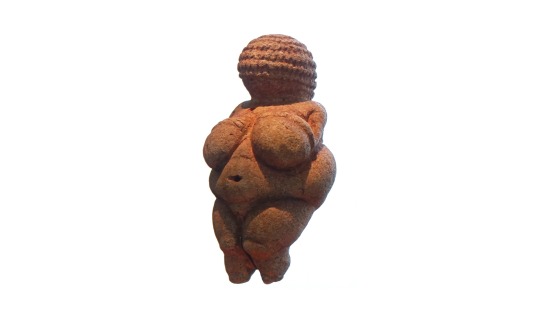
There has been so much speculation. Is it a hat that she is wearing? If it is a hat, was there knitting 24,000 years B.C.? Is it her hair? Is her hair curled, or are these some cornrows? Undeniably this is style.
Just as famous, she is called the “Venus of Brassempouy.” the sculpture dates from about 23,000 years B.C, and again what is going on with her head? Is her hair supposed to represent some braids or plaits? More likely, it’s a headdress intricately made and extremely good-looking!
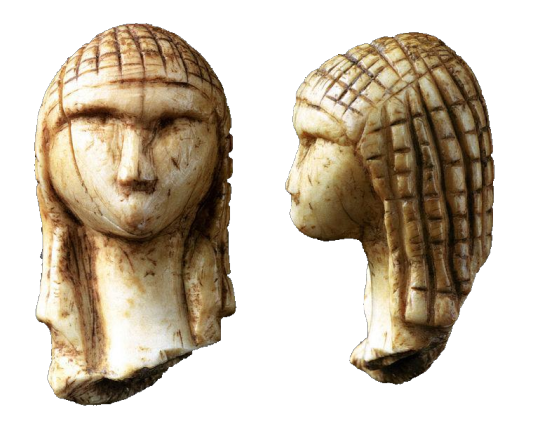
Is this the birth of fashion? Because both the “Venus of Brassempouy” and the “Venus of Wellendorf” belong to a culture.
Gravettian Culture:
From about 35,000 - 22,000 B.C.E., Gravettian culture comes from northern Europe; We are talking Ice Age business here. We have learned much about how Gravettians dressed because of a man called “The Prince.” The Prince of Arene Candide was buried with numerous perforated shells and animal teeth. His clothing, the leather of his outfit, had worn away through the millennia, but the rows of shells and teeth remained.


When he was found, all of the shells corresponded to how they looked on his leather tunic, onto his leather pants, and even onto his boots, as well as the skullcap made entirely of shells and teeth. He did not have to do not have to sew thousands of shells and teeth onto his leather clothing. This was the ice age. They were still nomadic, yet they took the time to do this. Why? Because it looked good! It shows status, some wealth, some sort of importance. For the period, this work was incredible!
Transition to Present Day:
Some trends from the last five years are resurfacing that emulate the fashion mentioned previously. This headdress is similar to the one depicted by the “Venus of Brassempouy” as pictured on pop star and fashion designer Rihanna.

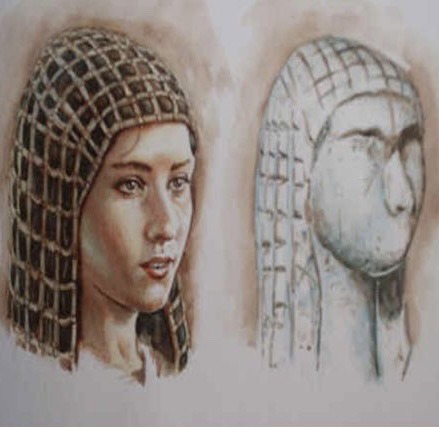
Another example is the numerous shell dresses the luxury fashion house Alexander McQueen designed. The usage of shells is reminiscent of Gravettian Culture and how their people would customize their clothing.
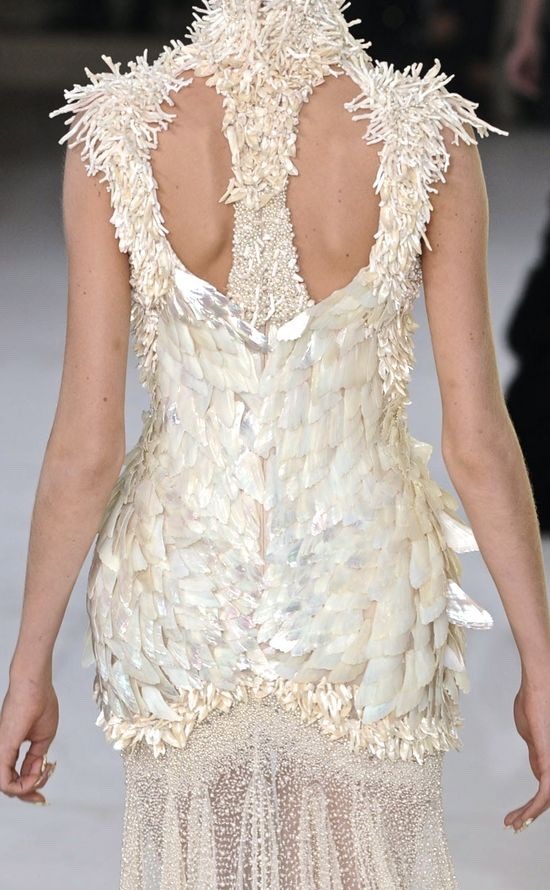
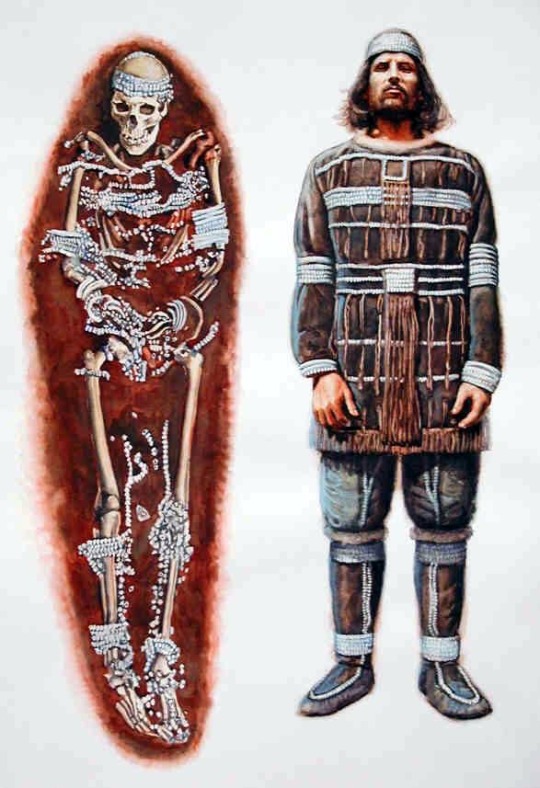
Sources:
https://www.mudifinale.com/en/il-giovane-principe/
10 notes
·
View notes
Text
Depends on how far back you go. Prehistory is a broad stretch of time. If you're going for paleolithic, then it would be the Gravettian culture. They definitely wore some visually interesting clothing as in these reconstructions by Libor Balák:



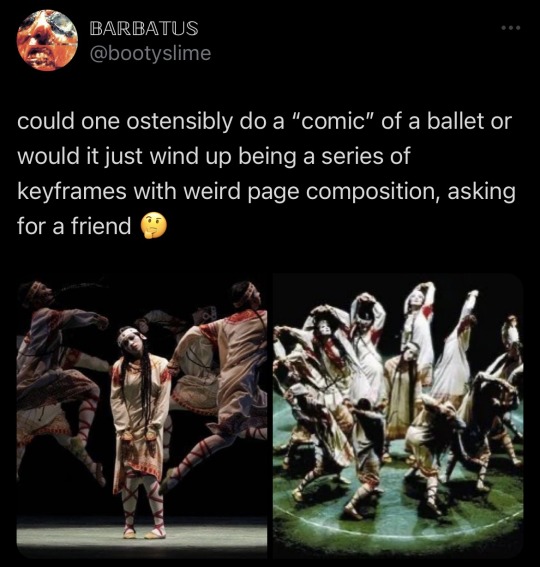
much to consider


117 notes
·
View notes
Photo

The corpse of an exploded star and more — March’s best science images Dental decorations. These adornments made from the teeth of animals, including bears, elk and foxes, were crafted by Gravettian hunter-gatherers the culture responsible for the iconic Venus of Willen…
0 notes
Link
A selection of beads dating to the Gravettian period in Europe. (Image credit: J. Baker, et al) Tens of thousands of years ago, prehistoric humans in Europe adorned themselves with such a wide variety of beads that researchers have classified nine distinct cultural groups across the continent based on their location and distinctive styles. The...
0 notes